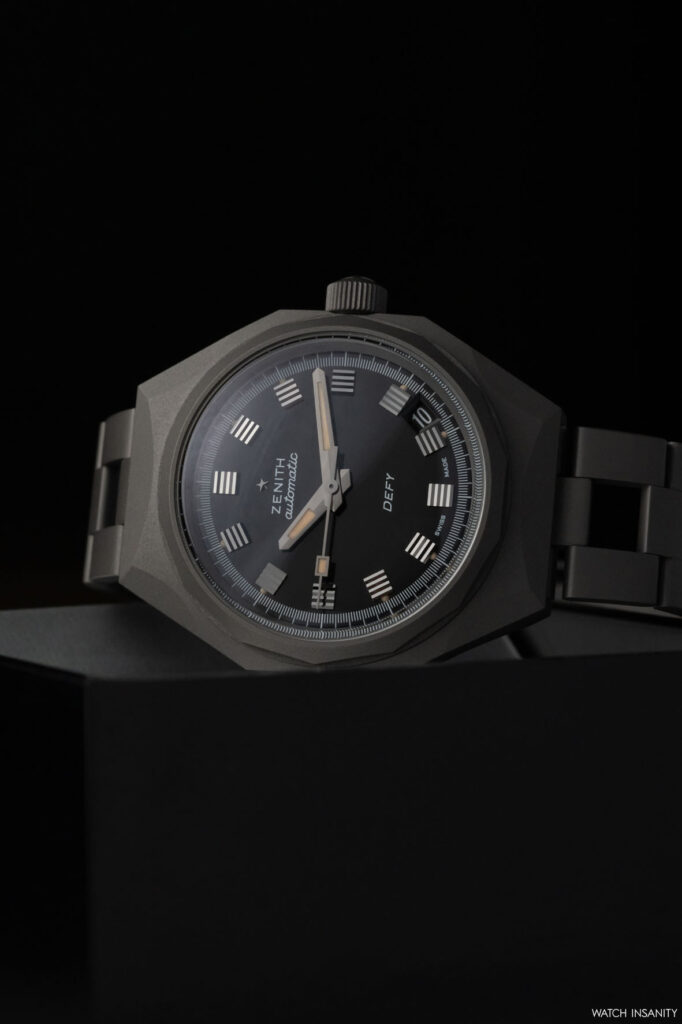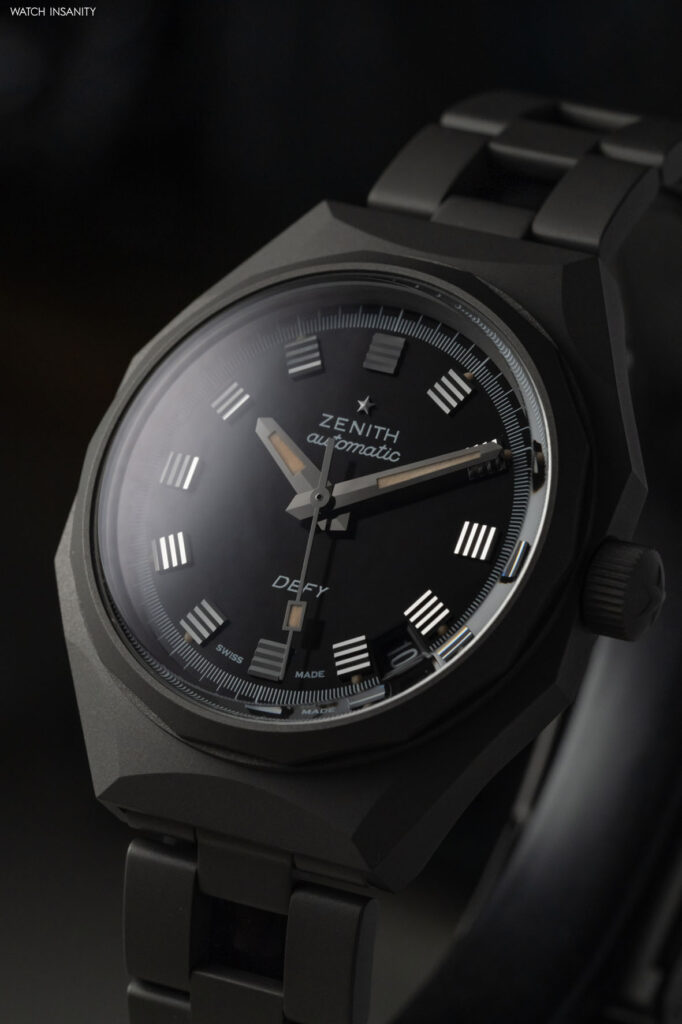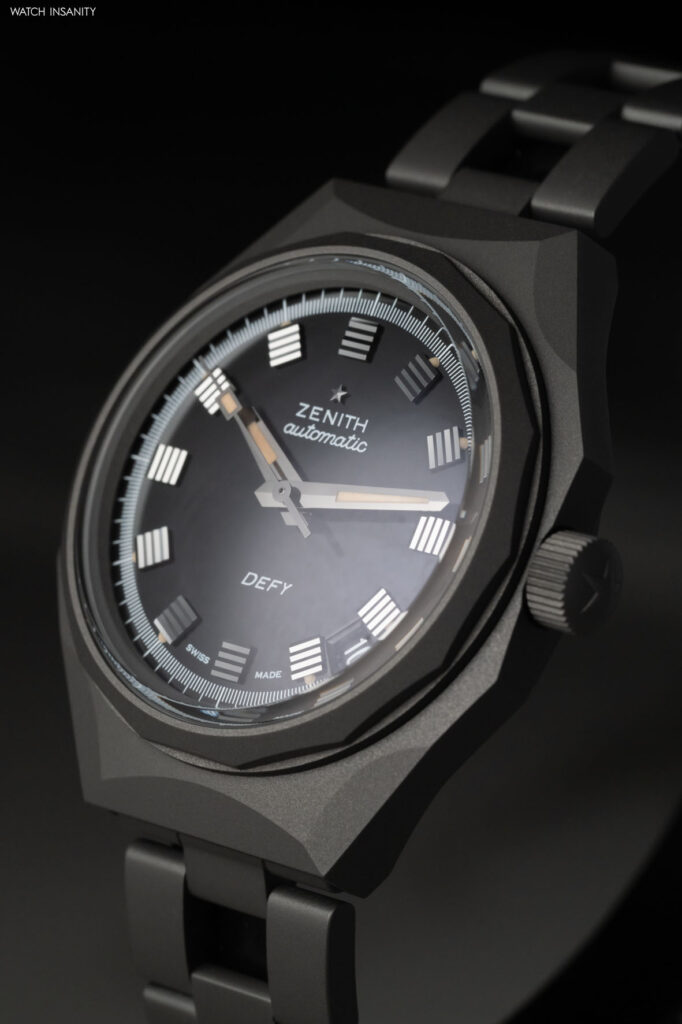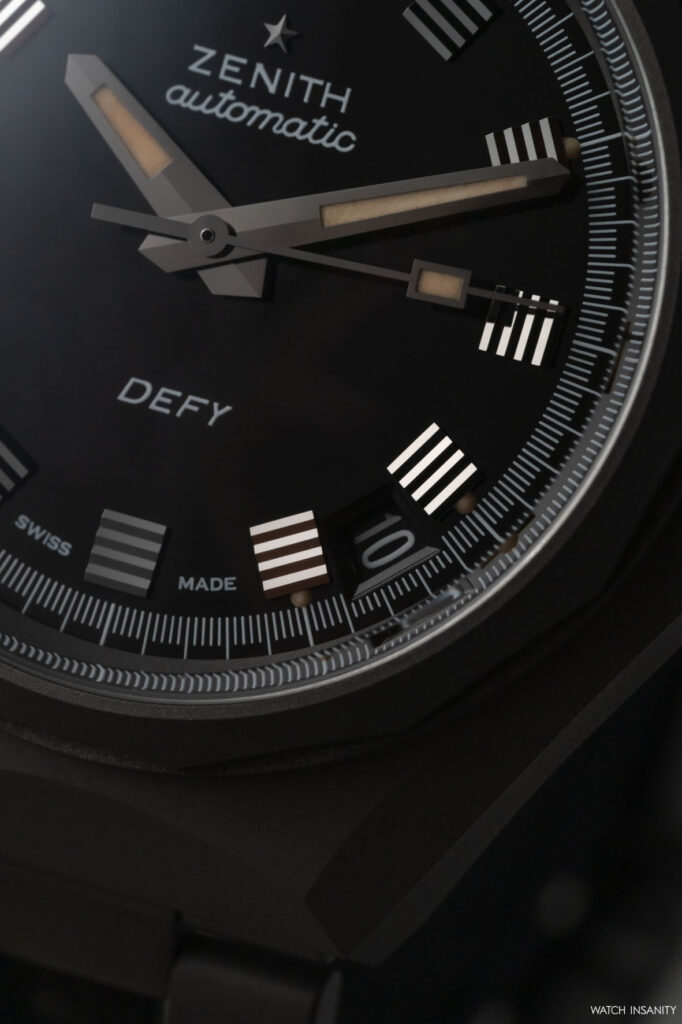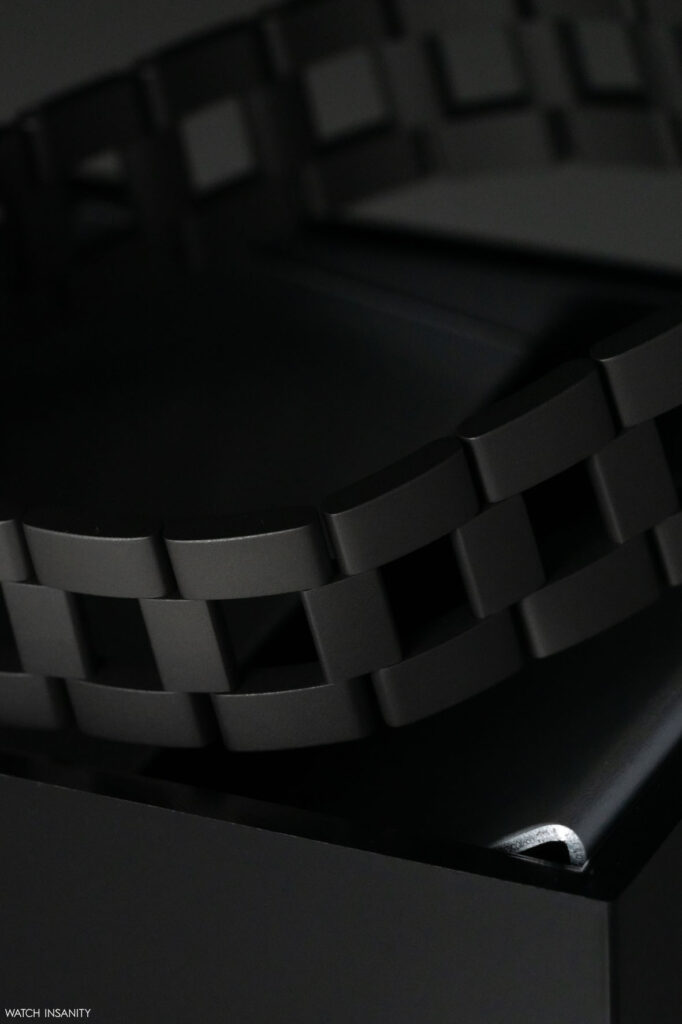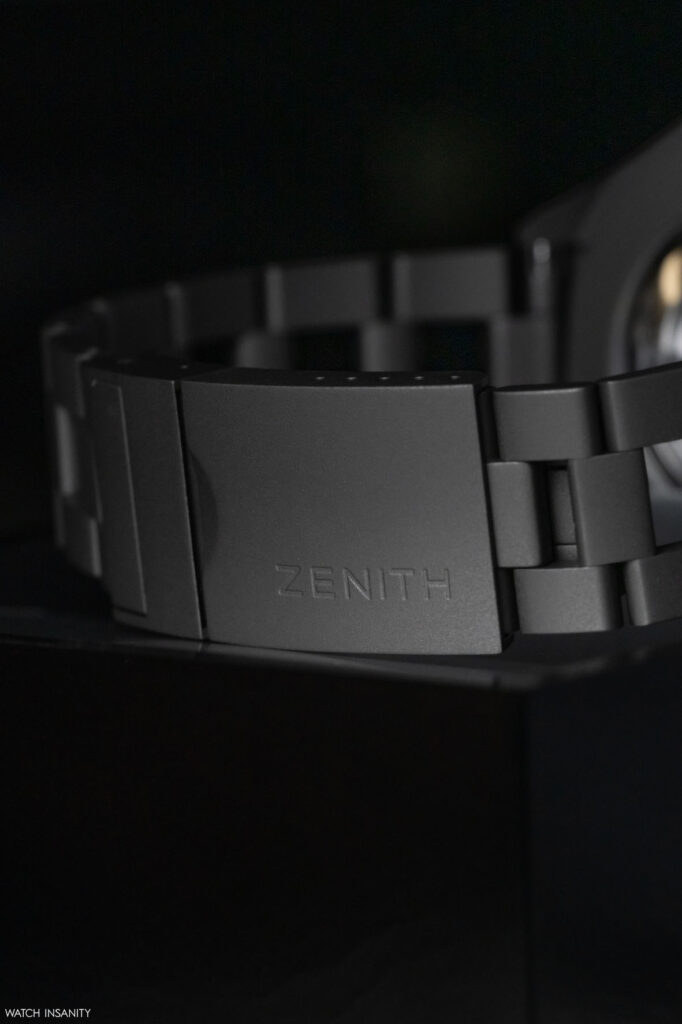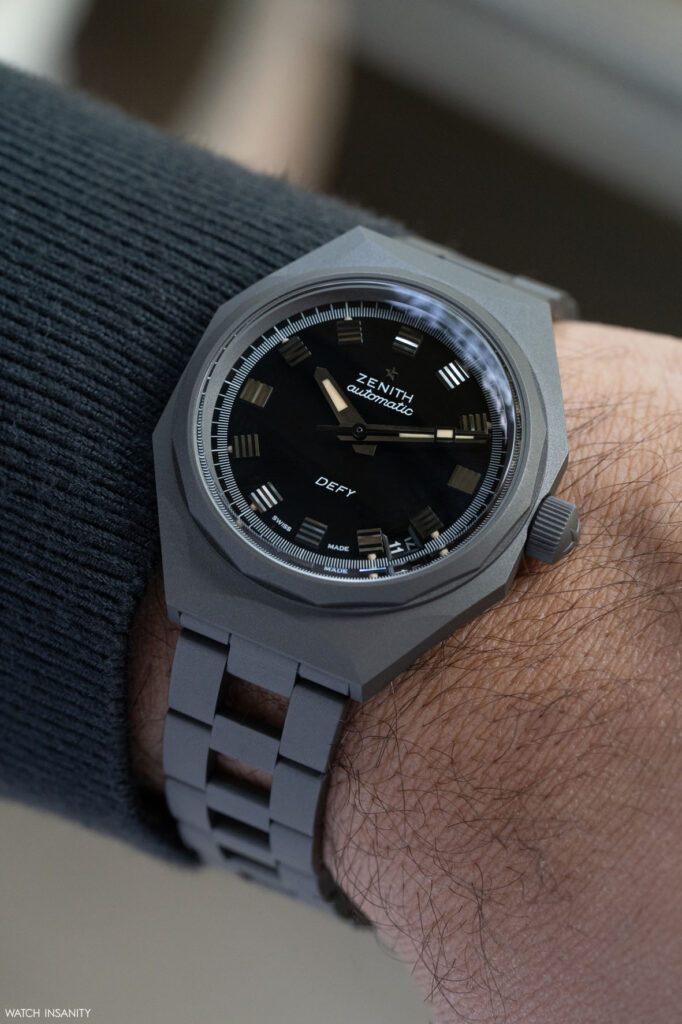Zenith DEFY Revival Shadow: light and mysterious
17 July 2023At the latest Watches and Wonders, Zenith boldly turned to modernity. On the one hand, the brand has completely updated the Pilot collection – that we have written of in the past weeks. On the other hand, they have dressed one of their legendary watches, the Defy, in a more contemporary suit. What’s more: in the classic configuration with the famous Gay Frères ladder bracelet.
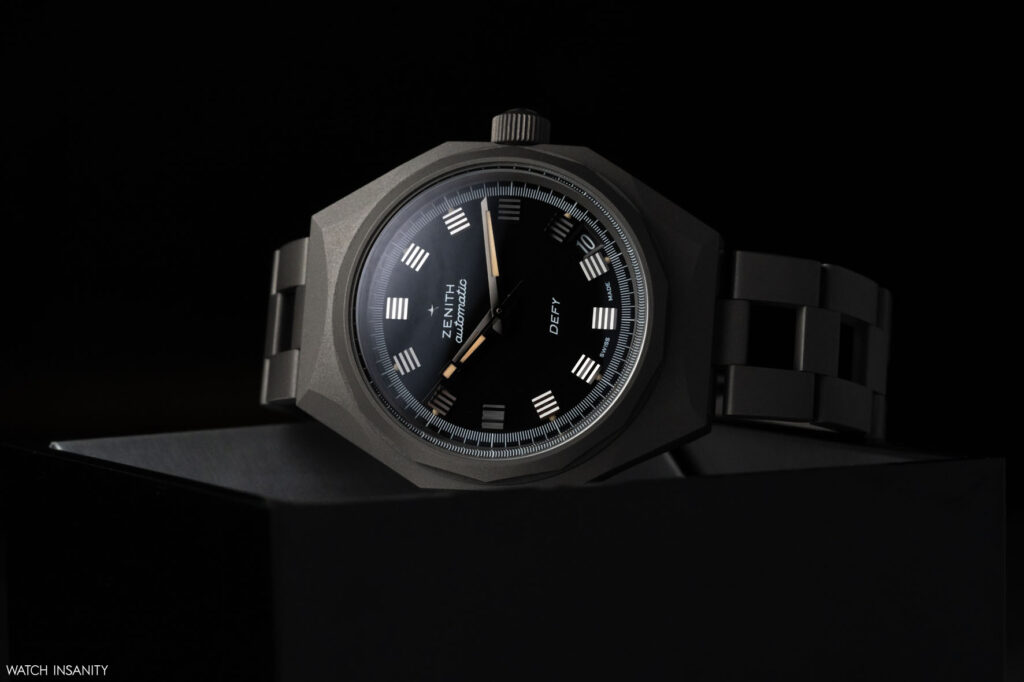
The Defy Revival Shadow is a very current interpretation of a piece that has made watchmaking history. To create it, Zenith undertook a challenge which led the designers to mix avant-garde materials with a classic look. So classic that it deserves a brief excursus before going into detail about the Defy Revival Shadow.
ZENITH DEFY? ALWAYS A STEP AHEAD
The Zenith Defy was launched more or less together with the El Primero movement, in 1969. It was powered by a workhorse caliber, the 28,000 vph, chronometer-certified 2562PC. A patented suspension system protected it from shocks. For this reason, it was described as a robust watch, to be worn every day. That reliability earned it the nickname of ‘time safe’.
The first model had an octagonal-shaped case that was water-resistant up to 30 bar, mineral glass, screwed-down case back and crown. All classic features of a watch designed for life in the open air, ready to face any type of conditions, but also elegant. A concept that anticipated by a few years the sporty-chic timepiecephilosophy, that would later be embodied by Audemars Piguet’s Royal Oak. This gives an idea of how much the Defy was ahead of its time.
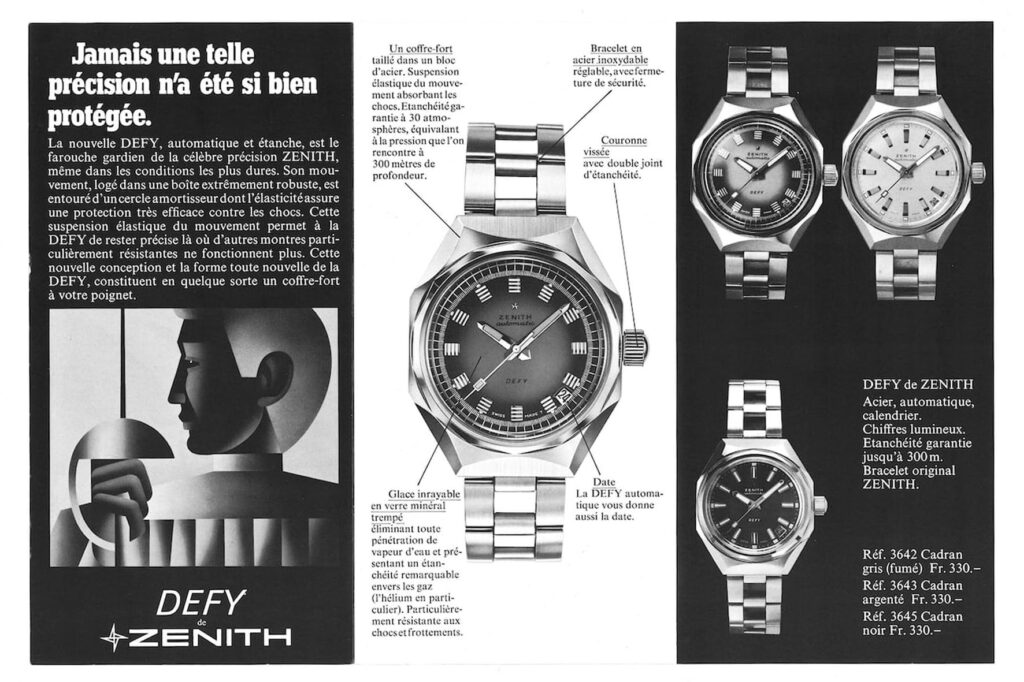
To confirm the success of this combination of movement and shape designed to withstand the toughest conditions, in 1971 six Defys were tied to the spokes of the rear wheel of a motorbike during a speed contest at Wembley Stadium, in London. The watches passed the test ‘very well’, as the Zenith staff certified. The same year the brand put the watch on a monoski to cross the Channel: even in that case, it passed the test without a hitch.
Shortly thereafter, the Defy changed look, because Zenith introduced that 14-sided bezel that made it recognizable and gave it a more sober appearance, in line with the brand’s range. The Defy thus became cleaner, more refined and elegant. The first chronograph was also introduced to the collection, powered by the in-house Zenith caliber 3019 PHC, an El Primero movement with an additional date function. For a decade, the Defy collection was the flagship not only of Zenith, but of the entire Swiss watchmaking sporty-chic segment.
FROM THE PAST TO THE FUTURE
At the end of the 1970s, the quartz crisis forced Zenith to keep pace with demand and changing tastes; thus, watches with that kind of movement also entered the Defy collection. A decision and a strategy that the brand would later retract in the following years. In 2000, the LVMH group took over Zenith and six years later the Defy line was relaunched.
Over the last years, the Defy Classic and the Defy Xtreme soon made up a quarter of the Zenith range. As proof of how much the Defy has been an avant-garde watch since its birth, in 2017 the CEO Julien Tornaredecided to strengthen this futuristic soul of the collection.
He developed the Defy Lab, a new type of oscillator engraved from a silicon wafer that brought together the functions of the balance wheel, hairspring and lever in one single piece. With an accuracy nearly ten times higher than normal, the new movement went into series production after a limited edition, powering the Zenith Defy Inventor in 2019, with its 129,600 vibrations/hour visible through the transparent case side.
DEFY REVIVAL SHADOW AND THE LIGHTNESS OF ZENITH
Let’s now take a closer look at the new Defy Revival Shadow. Its name recalls that of the Chronomaster Revival Shadow, launched in 2020 and inspired by a mysterious prototype from 1970, shrouded in mystery until its discovery. It happened in 2019 in the secret attic of the manufacture where, in the past, Charles Vermot had hidden the project documents and components for the production of the El Primero movement.
The Defy Revival Shadow does not have a mysterious ancestor behind it, but brings the same approach to elegance and choice of materials that characterizes the Shadow references in the collection. Which, as the name suggests, are dressed in night shades and shadows, like the prototypes of the 70s with burnished steel cases.
Here, however, no steel. Zenith has chosen titanium for the case and bracelet and, having worn the watch, we can say that they made a good choice. It is almost insubstantial on the wrist, with a lightness that you expect of a full-titanium watch – which leaves one speechless. Those who like to feel the timepiece when wearing it should turn to other models. This lightness is due in large part to the case, but above all to the legendary Gay Frères-style ladder bracelet.
THE SECRET IS IN THE BRACELET
We have already written about the Gay Frères story. The bond between the Swiss company and Zenith was consolidated precisely in the 1960s and 1970s, after Gay Frères became one of the few manufacturers that understood the subtle nuances distinguishing a bracelet that could be well combined with an elegant watch from those that matched a sports watch. Being able to adapt the design from one type of watch to another was crucial to the company’s success.
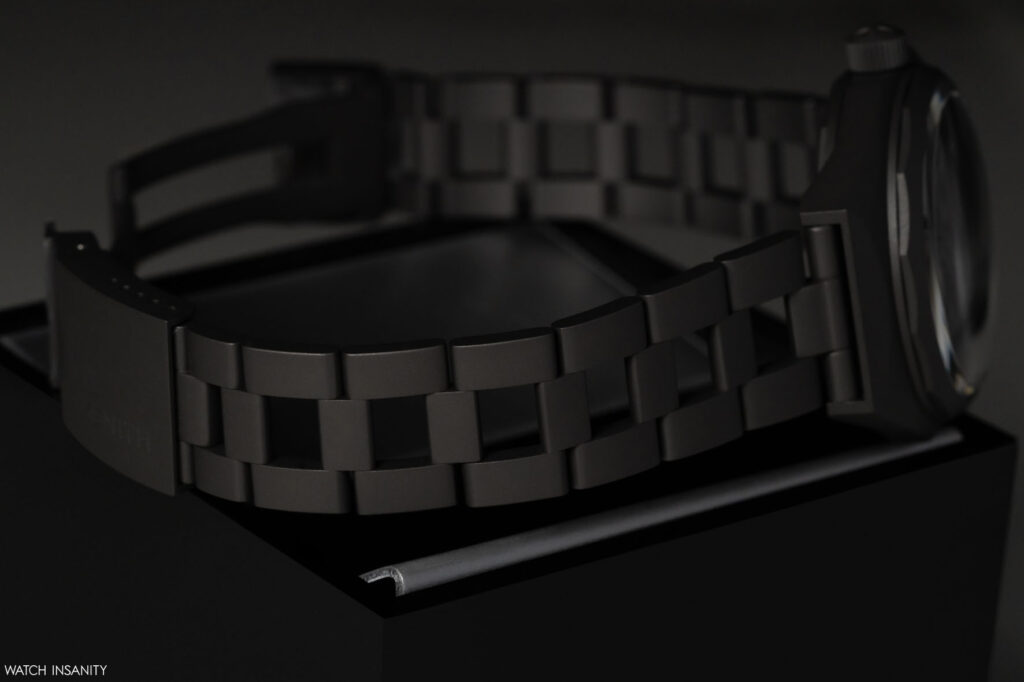
When some manufactures in those years started creating chronographs and other professional watches, Gay Frères opted for new designs. Zenith, for example, ordered both ladder and hollow link bracelets for the El Primero. The ladder bracelet, in particular, became something of a Zenith trademark – some may not even know it’s a Gay Frères design. This bracelet has given the brand’s watches their distinctive look. That’s why, if you want to buy a vintage piece without the original ladder bracelet, you have to shell out a few thousand euros just to obtain it separately.
A LESSON OF MINIMALISM
Luckily the Defy Revival Shadow does have that bracelet. And, like the case, it is in matt and micro-sandblasted titanium, just as its new folding buckle. A dark finish with a delicate texture, which makes the watch very discreet, understated, minimalist. The 37 mm octagonal case and the classic 14-sided bezel of the collection, which have always defined the Defy in a clear and bold way, are quite softened with the micro-sandblasted workmanship: something far from the previous versions of the Defy Revival, which had shaded brown, burgundy or blue dials.
The material and finish are this watch’s main strengths. Micro-sandblasting is not just a coating, but the dark look is the result of the finishing technique itself, which gives the timepiece a matte, almost black look.
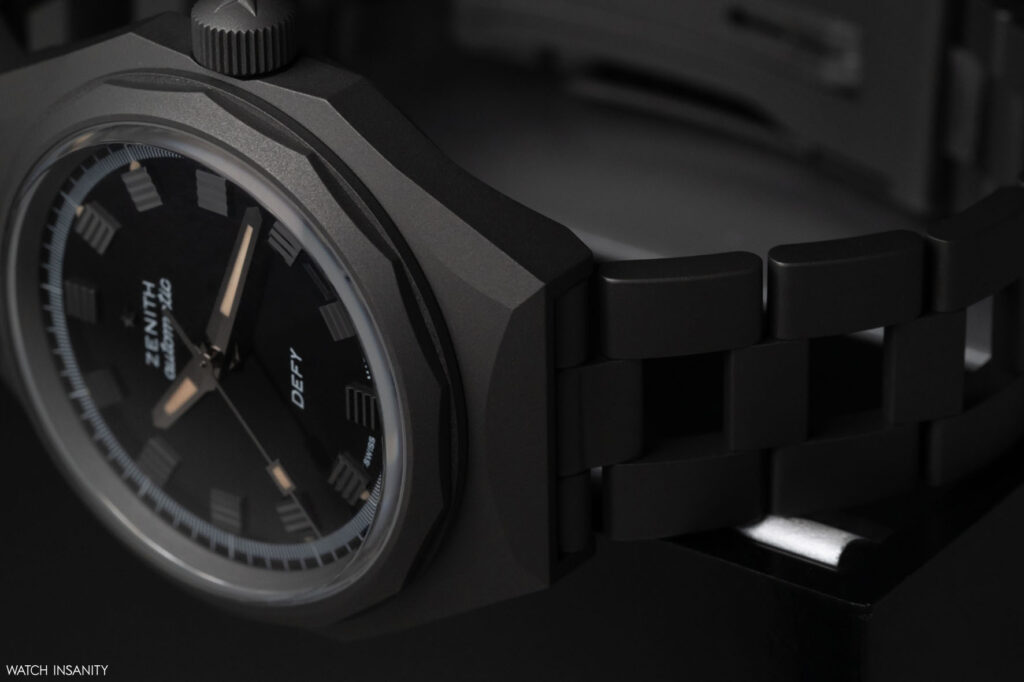
On to the dial, also deep black, there are the faceted rhodium-plated hour and minute hands and the square-grooved indexes, typical of the Defy. They are covered in Super-LumiNova which takes on a creamy hue. The date window is at 4:30. This position made someone turn up their noses, but is consistent with that of the original Defy. The black date disc makes the window less evident and blending well with the rest of the dial.
ZENITH DEFY REVIVAL SHADOW: THE CALIBER
At the heart of the watch beats the in-house Elite 670 caliber. It is an automatic movement developed on the Elite 680, which equips a large part of the Defy collection. It is also housed in the Defy A3691 Revival and A3690 Revival, as well as in some references from the Elite collection. All with hours, minutes, central seconds and date.
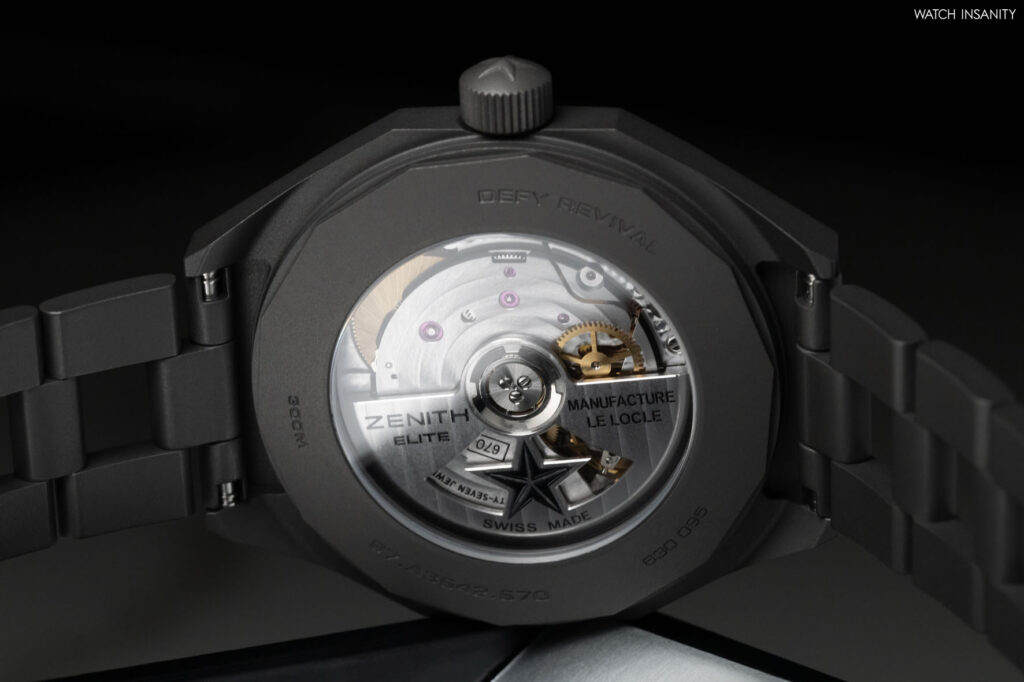
The caliber is robust, has a silicon escape wheel and lever – therefore anti-magnetic – and beats at a frequency of 28,800 vibrations/hour, for approximately 50 hours of power reserve. It is visible through the sapphire crystal case back, and its most striking features are a new star-shaped oscillating weight (in the tradition of Zenith’s latest movements) and a satin finish that brings harmony to the timepiece’s overall look.
Ultimately, therefore, this is a successful watch, as you can see from the pictures of the exclusive Watch Insanity shooting. The modern look does not clash with the classicism of the Defy collection, because the timepiece has kept the golden proportions of its origins.
The price, on the other hand, is modern, and places it in the lower end of the Defy collection’s scale of prices – only the steel Revivals cost less than it. In any case, it is in line with what we can expect from a full titanium watch. Launchedat 7,400 francs when released – just over 7,500 euros today –, it now costs 8,000 euros. It is the right price to put a discreet, contemporary and ultra-light legend on your wrist.
By Davide Passoni

